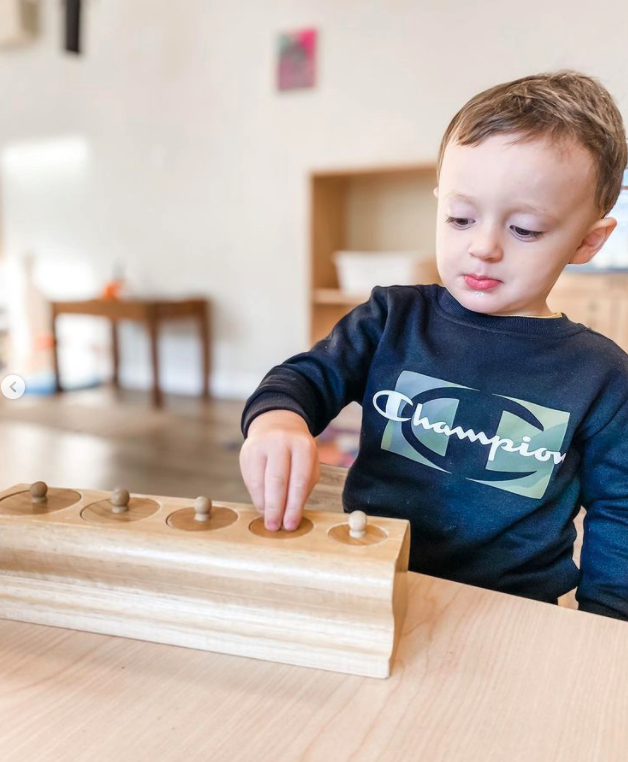How might we guide our children to want to learn? To want to discover? To always pursue more without being told they must? The key lies in what type of motivation we utilize as parents and as educators.
Rewards and Punishments
In most traditional education settings around the country, teachers use systems of rewards and punishments to drive desired behaviors. Most of us grew up experiencing this type of system, and it can be easy as parents to occasionally rely on these tactics as well. These are extrinsic motivators, and they’re more common than you might think.
Rewards are positive and external. For example, a teacher might give a child a gold star sticker or a special stamp on their paper if a child does well. They may let children have extra playtime for following directions or a pizza party in exchange for getting their homework done. Rewards can take many other forms, too, including verbal praise or good grades on a report card.
Punishments include any negative external motivator. These include bad grades and removal of privileges but sometimes include harsher examples.
Believe it or not, there are even more ways to impart subtle, nuanced external motivators. Any time we make a statement or even use a facial expression that conveys our own pleasure or displeasure with behavior or action, we are utilizing external motivation. While these tactics may sometimes work in the short term, research shows they do little for long-term motivation success.
Intrinsic Motivation
Some forms of motivation don’t come from an outside source at all, but from within the individual. The good news is, children are born wanting to learn. We are curious beings and have the innate ability to work for our own joy.
Think of a time you accomplished something great. How did you feel afterward? Were you thinking about how others would perceive your accomplishment or were you satisfied with your work for its own sake? Here at Bay Farm Montessori Academy, we often guide children to reflect on their own feelings after they complete a challenge. They may come to us, excitedly showing or retelling. We may be inclined to say, “Good job!”, but those types of statements are better off unsaid. If we reward a child with our approval, they will work to seek that approval in the future. If instead, we ask a child how they feel about the work, or comment on something factual we notice, the drive will remain within them. We might say, “I noticed you kept trying even when that was challenging. How do you feel now that you completed it?” or “It seemed like you enjoyed that work. What will you do next?” These types of statements make it possible for us to acknowledge a child without placing our own judgments on their experiences.
Research suggests that while external rewards may work occasionally, intrinsic motivation is much more effective. In one study, preschoolers who loved to draw were divided into three groups: one was told they would receive a reward for drawing, one was told they would not, and a third received an unexpected reward afterward. Not surprisingly, the group that expected a reward drew for much less time and created less aesthetically appealing drawings. There was little difference between the other two groups, although they far outperformed the first.

Driving Forces in Academics
So how do Montessori teachers guide children to want to do their work? As we mentioned before, that’s the easy part. The desire to work is innate in children. Our job is to nurture and honor it. Even the terminology we use is intentional. Our youngest students aren’t asked to play during the morning cycle, but to work. We let them know we recognize what they’re doing is important. It’s work, and we are there to support them in doing that work.
As Montessorians, we also believe that a beautiful environment full of enriching materials can serve to motivate children. We consider what the children before us need, and we carefully select and place appropriate materials on the shelves for them to discover.
Montessori materials are typically autodidactic. This means that the learner is able to self-correct their work while they are in the process of completing it. For example, child-placing wooden cylinders into holes will know they need to adjust their work if the final cylinder doesn’t fit into the final hole. These built-in corrections allow the child to work and learn directly from the materials without teacher input, essentially furthering the child’s independence and internal motivation.
Bay Farm teachers are also adept at utilizing children’s interests to help them succeed in areas that challenge them. A child who is reluctant to read but loves dinosaurs may just need a basket of books about dinosaurs. A child who resists math but adores their friends may need to work cooperatively to find success. Knowing what sparks a child’s enthusiasm is the key to opening a whole world of academic content.
There are other structures built into the Montessori day that support intrinsic motivation. The three-hour uninterrupted work cycle is one, as is allowing for ample student choice. The strategies allow children to select work that is meaningful to them, and to spend time really getting deep into that work. We allow them to fully explore their interests, which is where real creativity and lasting learning take place. Children feel empowered by their independence, and this in itself drives them to explore deeper learning.
When we teach children to follow their own instincts, even when it comes to learning, we are preparing them for a lifetime of success. School won’t just be a place they have to go and have information delivered to them; it becomes a place where they look forward to going so that they may discover the world for themselves.
Bay Farm is accepting applications for the 2022-2023 school year. We encourage you to inquire online today to begin a conversation with our Director of Enrollment!



